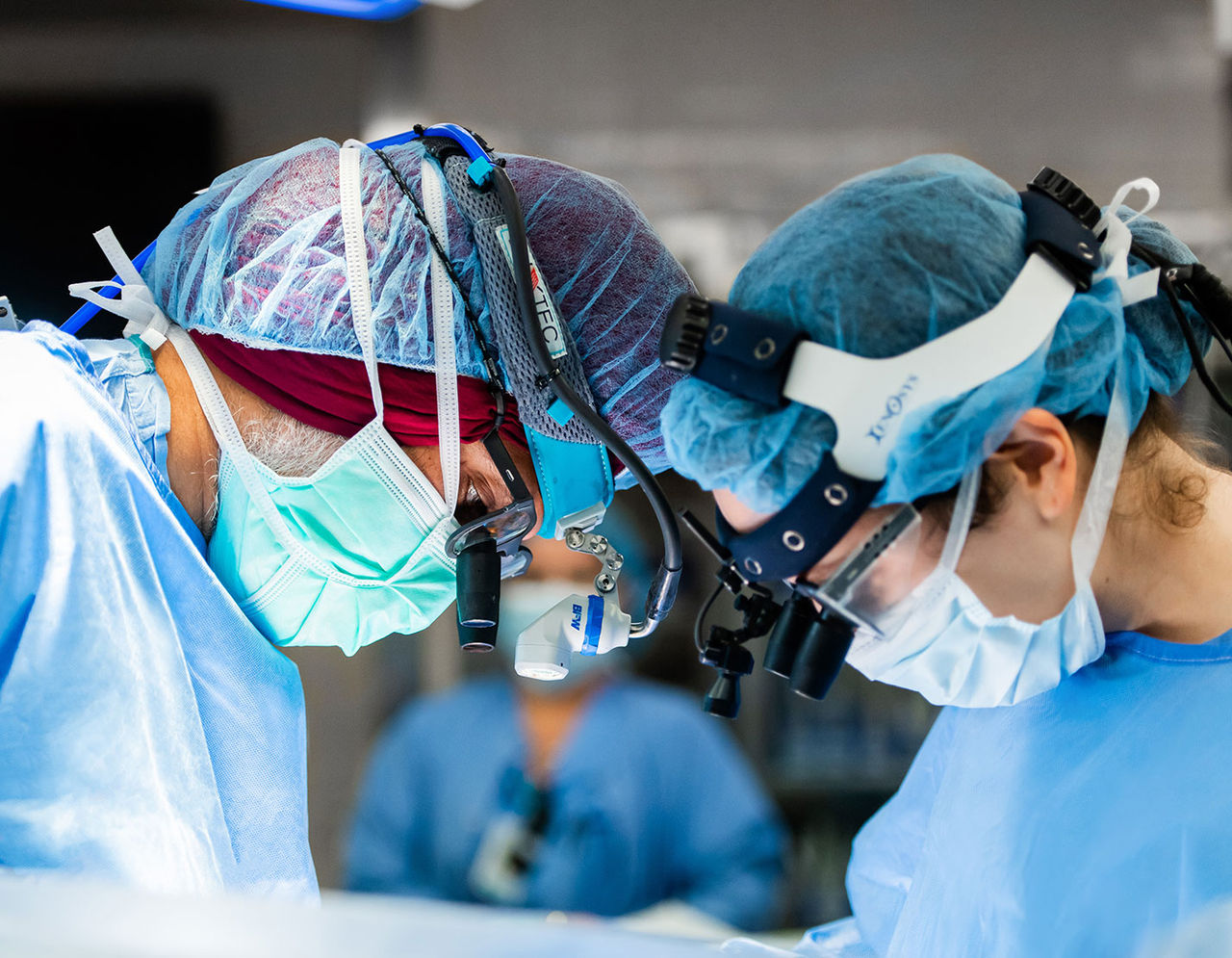What is an aortic aneurysm?
An aneurysm is a bulge that forms in a blood vessel. It occurs when the vessel wall becomes weak and can no longer handle the pressure of blood flowing through it. An aortic aneurysm is when this happens in the aorta — the body’s largest artery. The aorta pumps oxygen-rich blood from your heart out to the rest of your body.
The aorta is shaped like a cane. It starts at the heart and first travels upward toward the head, sending off branches that supply blood to the brain and upper body. From there, it arches back and downward along the spine, delivering blood to key organs — such as the lungs, liver, intestines, and kidneys — before splitting to carry blood to the legs. The aorta is divided into sections based on its location: the thoracic aorta (in the chest) and the abdominal aorta (in the belly).
There are two types of aortic aneurysms, each affecting different parts of the aorta:
- Abdominal aortic aneurysms occur in the stem-like part of the aorta that goes through your belly.
- Thoracic aortic aneurysms occur in the curved part of the aorta that runs through your chest.
Abdominal aortic aneurysms are more common. Although the damage happens in the aorta, not the heart itself, these aneurysms are sometimes referred to as “heart aneurysms.”
Aortic aneurysms can grow large enough to rupture (burst) or cause an aortic dissection (tear), leading to life-threatening internal bleeding.
Your provider monitors the aneurysm and how fast it grows to determine the right treatment approach. Our Aortic Disease Program provides leading-edge, research-based treatment for aortic aneurysms, delivered by a team of expert heart and vascular specialists.




